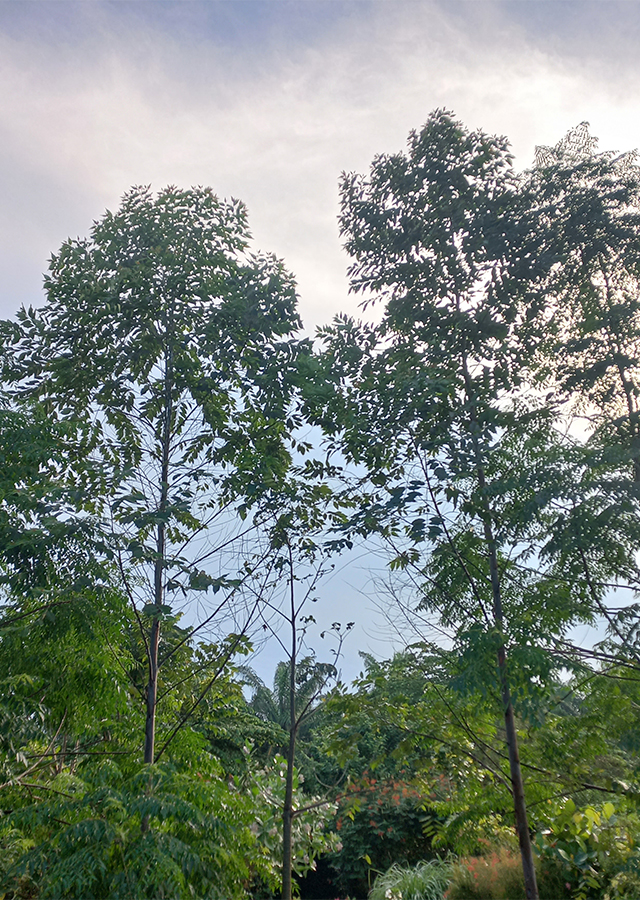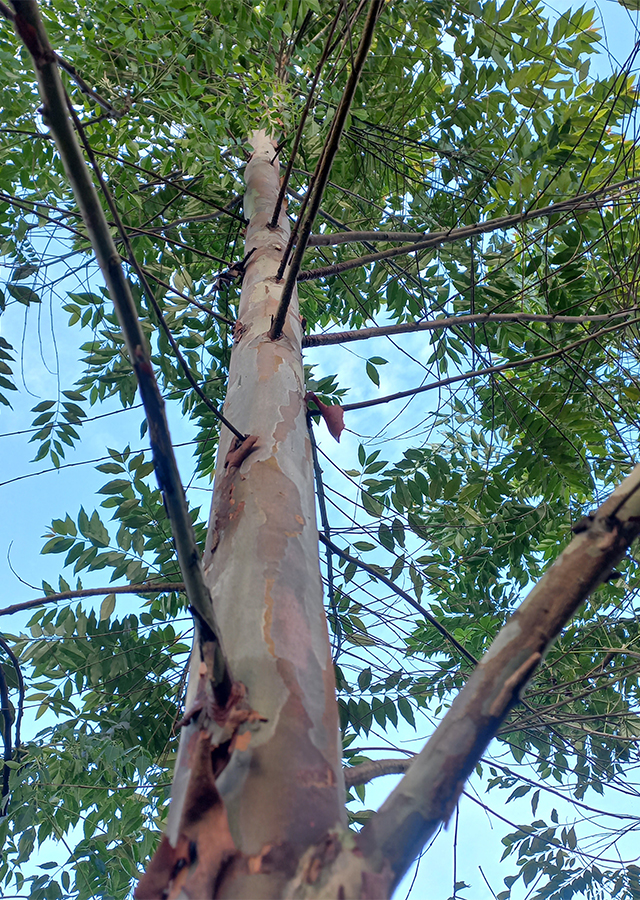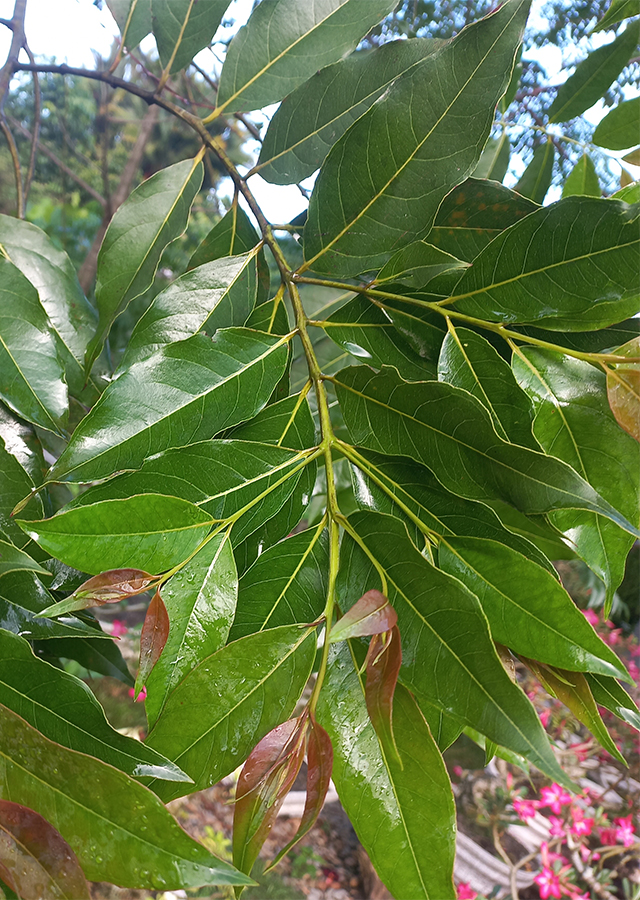Rainbow Eucalyptus
Eucalyptus deglupta Blume
Myrtaceae
Location in our garden
Principal



Synonym
Eucalyptus binacag (Elmer) Elmer
Eucalyptus multiflora Rich. ex A.Gray
Eucalyptus naudiniana F.Muell.
Habitus
Trees. A fast-growing, huge evergreen tree, usually growing 35 - 60 m tall, with occasional specimens up to 75 m
Part Used
Leaves
Growing Requirements
Full Sunshine
Habitat
Forest
Terrestrial
Overview
Eucalyptus deglupta, or the aptly named Rainbow Eucalyptus, originated in the Philippines and is the only species of eucalyptus that is native to the northern hemisphere. The tree is widely exploited for its wood, which is traded internationally. Due to its very attractive bark and quick growth, the species is frequently planted as an ornamental tree.
Vernacular Names
Gommier robuste (French), Komo (Papua New Guinea), Bagras (Philippines).
Agroecology
Dense stands are commonly found along rivers where it has colonized newly formed banks and non-stagnant river flats. Also found on sites that have been cleared or disturbed by landslides, volcanic eruptions, shifting cultivation etc. It is found at elevations from sea level to 1,800 m in areas where the mean annual temperature is in the range 23 - 31°c and the mean annual rainfall is 2,500 - 5,000 mm. Requires a sunny position with full overhead light. Plants can grow successfully on coarse-textured sands and loamy soils, volcanic ash and limestone-derived soils. Prefers a pH in the range 6 - 7.5.
Morphology
- Trunks - about 250 cm diameter, with buttresses 3 to 4 m high.
- Barks - smooth, yellow, orange or brown, becoming green after flaking.
- Leaves - juvenile leaves opposite, ovate to lanceolate. Adult leaves opposite to subopposite, rarely alternate, shortly petiolate, held almost horizontal on branches, ovate to ovate-lanceolate or acuminate, thicker than juvenile leaves.
- Flowers - 3 - 7 umbels in terminal or axillary panicles. Pedicels terete or slightly angular, about 5mm long. Young buds small, green with double opercula. Developed buds pale green or cream, globular. Operculum hemispherical, flowers with many white to pale yellow stamens 0.2-1cm long.
- Fruits - small, thin capsule with 3 or 4 exserted (protruding) valves, making the capsule appear globular and disc-shaped. Mature fruits furn from brown to dark brown, containing 3-12 well-formed seeds per valve.
- Seeds - tiny, brown, flattened, with a small terminal wing.
Cultivation
Propagated by seeds - Seeds germinate in 4 - 20 days with a germination rate of 50 - 60%. Pot up the seedlings into individual pots as soon as the second set of seed leaves has developed, if left longer than this they might not move well. The seedlings are ready for planting in the field when they are 25 - 30 cm tall, usually after 3 - 4 months. The seed has a long viability.
Chemical Constituents
Essential oils (phellandrene, aldehydes and ketones, phenols, sesquiterpenoids, of which E-nerolidol is the main component), saponins, phenols, tannins, cardiac glycosides, terpenoids, quinones, anthocyanidins, polyphenols and flavonoids.
Traditional Medicinal Uses
- Antiseptic and deodorant: Apply crushed leaves on affected area.
- Cough and asthma: Take decoction of leaves as tea.
- In other countries, used to combat malaria.
- Used as antiseptic gargle.
- Used for lung infects and bronchitis.
- Oil used for croup and spasmodic throat problems.
Part Used
Reference Sources
- Fern, Ken. Useful Tropical Plants. (2021). Eucalyptus deglupta. http://tropical.theferns.info/viewtropical.php?id=Eucalyptus+deglupta. 08-01-22
- Flora & Fauna Web. Eucalyptus deglupta. https://www.nparks.gov.sg/FloraFaunaWeb/Flora/2/8/2886. 08-01-22
- StuartXchange. Philippines Medicinal Plant. Eucalyptus deglupta. http://www.stuartxchange.org/EucalyptusDeglupta.html. 08-01-22
